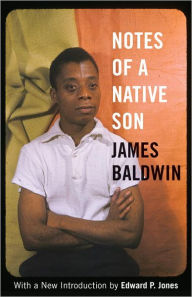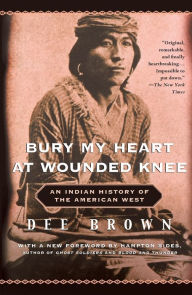Roxanne Dunbar-Ortiz grew up in rural Oklahoma, the daughter of a tenant farmer and part-Indian mother. She has been active in the international Indigenous movement for more than four decades and is known for her lifelong commitment to national and international social justice issues. After receiving her PhD in history at the University of California at Los Angeles, she taught in the newly established Native American Studies Program at California State University, Hayward, and helped found the Departments of Ethnic Studies and Women’s Studies. Her 1977 book The Great Sioux Nation was the fundamental document at the first international conference on Indigenous peoples of the Americas, held at the United Nations’ headquarters in Geneva. Dunbar-Ortiz is the author or editor of seven other books, including Roots of Resistance: A History of Land Tenure in New Mexico. She lives in San Francisco.
An Indigenous Peoples' History of the United States
Paperback
(New Edition)
- ISBN-13: 9780807057834
- Publisher: Beacon Press
- Publication date: 08/11/2015
- Series: ReVisioning American History Series , #3
- Edition description: New Edition
- Pages: 312
- Sales rank: 3,254
- Product dimensions: 8.90(w) x 6.00(h) x 1.00(d)
Choose Expedited Delivery at checkout for delivery by. Monday, October 14
The first history of the United States told from the perspective of indigenous peoples
Today in the United States, there are more than five hundred federally recognized Indigenous nations comprising nearly three million people, descendants of the fifteen million Native people who once inhabited this land. The centuries-long genocidal program of the US settler-colonial regimen has largely been omitted from history. Now, for the first time, acclaimed historian and activist Roxanne Dunbar-Ortiz offers a history of the United States told from the perspective of Indigenous peoples and reveals how Native Americans, for centuries, actively resisted expansion of the US empire.
In An Indigenous Peoples’ History of the United States, Dunbar-Ortiz adroitly challenges the founding myth of the United States and shows how policy against the Indigenous peoples was colonialist and designed to seize the territories of the original inhabitants, displacing or eliminating them. And as Dunbar-Ortiz reveals, this policy was praised in popular culture, through writers like James Fenimore Cooper and Walt Whitman, and in the highest offices of government and the military. Shockingly, as the genocidal policy reached its zenith under President Andrew Jackson, its ruthlessness was best articulated by US Army general Thomas S. Jesup, who, in 1836, wrote of the Seminoles: “The country can be rid of them only by exterminating them.”
Spanning more than four hundred years, this classic bottom-up peoples’ history radically reframes US history and explodes the silences that have haunted our national narrative.
Customers Who Bought This Item Also Bought
-
- Lies My Teacher Told Me:…
- by James W Loewen
-
- A Different Mirror: A History…
- by Ronald Takaki
-
- The Last Stand: Custer,…
- by Nathaniel Philbrick
-
- A Terrible Glory: Custer and…
- by James Donovan
-
- A Short History of the United…
- by Robert V. Remini
-
- Slavery By Another Name: The…
- by Douglas A. Blackmon
-
- Blood and Thunder: The Epic…
- by Hampton Sides
-
- American Nations: A History of…
- by Colin Woodard
-
- The Last Gunfight: The Real…
- by Jeff Guinn
-
- Trail of Tears: The Rise and…
- by John EhleEhle
-
- The Autobiography of Martin…
- by Martin Luther King Jr.Clayborne Carson
-
- The War That Made America: A…
- by Fred AndersonR. Scott Stephenson
-
- Embers of War: The Fall of an…
- by Fredrik Logevall
-
- Notes of a Native Son
- by James BaldwinEdward P. Jones
-
- Bury My Heart at Wounded Knee:…
- by Dee BrownHampton Sides
-
- A Mighty Long Way: My Journey…
- by Carlotta Walls LanierLisa Frazier PageBill Clinton
-
- My Family and Other Animals
- by Gerald DurrellGerald Malcolm Durrell
-
- Mayflower: A Story of Courage,…
- by Nathaniel Philbrick
Recently Viewed
American Indian activist and scholar Dunbar-Ortiz (The Great Sioux Nation) launches a full-bore attack on what she perceives as the glaring gaps in U.S. history about the continent’s native peoples. Professional historians have increasingly been teaching much of what Dunbar-Ortiz writes about, yet given what she argues is the vast ignorance of the Indigenous experience, there still remains a knowledge deficit that needs to be rectified. She describes the U.S. as “a colonialist settler state, one that, like the colonialist European states, crushed and subjugated the original civilizations in the territories it now rules.” The conventional national narrative, she writes, is a myth that’s “wrong or deficient, not in its facts, dates, or details but rather in its essence.” What is fresh about the book is its comprehensiveness. Dunbar-Ortiz brings together every indictment of white Americans that has been cast upon them over time, and she does so by raising intelligent new questions about many of the current trends of academia, such as multiculturalism. Dunbar-Ortiz’s material succeeds, but will be eye-opening to those who have not previously encountered such a perspective. (Sept.)
Custer died for your sins. And so, this book would seem to suggest, did every other native victim of colonialism. Inducing guilt in non-native readers would seem to be the guiding idea behind Dunbar-Ortiz's (Emerita, Ethnic Studies/California State Univ., Hayward; Blood on the Border: A Memoir of the Contra War, 2005, etc.) survey, which is hardly a new strategy. Indeed, the author says little that hasn't been said before, but she packs a trove of ideological assumptions into nearly every page. For one thing, while "Indian" isn't bad, since "[i]ndigenous individuals and peoples in North America on the whole do not consider ‘Indian' a slur," "American" is due to the fact that it's "blatantly imperialistic." Just so, indigenous peoples were overwhelmed by a "colonialist settler-state" (the very language broadly applied to Israelis vis-à-vis the Palestinians today) and then "displaced to fragmented reservations and economically decimated"—after, that is, having been forced to live in "concentration camps." Were he around today, Vine Deloria Jr., the always-indignant champion of bias-puncturing in defense of native history, would disavow such tidily packaged, ready-made, reflexive language. As it is, the readers who are likely to come to this book—undergraduates, mostly, in survey courses—probably won't question Dunbar-Ortiz's inaccurate assertion that the military phrase "in country" derives from the military phrase "Indian country" or her insistence that all Spanish people in the New World were "gold-obsessed." Furthermore, most readers won't likely know that some Ancestral Pueblo (for whom Dunbar-Ortiz uses the long-abandoned term "Anasazi") sites show evidence of cannibalism and torture, which in turn points to the inconvenient fact that North America wasn't entirely an Eden before the arrival of Europe. A Churchill-ian view of native history—Ward, that is, not Winston—its facts filtered through a dense screen of ideology.


















